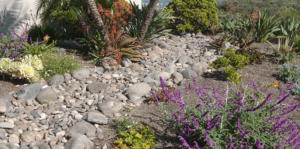Xeriscaping: what is it, and can I implement it in my garden here in Fort Lauderdale? You’re not alone if you’ve asked yourself this question! Xeriscaping is a pretty hot trend that might sound a little intimidating, but it’s actually a relatively simple way to tackle your landscaping and conserve water usage in your yard.
What is Xeriscaping?
In a nutshell, xeriscaping is the process of designing your garden in a way that requires little to no irrigation. Your mind may drift to desert gardens in Arizona that are pretty much exclusively cacti. However, there are a few different ways to tackle xeriscaping, which will allow you to add color and interest to your yard beyond cacti and succulents.
Xeriscaping follows a particular set of principles that encourage gardeners to use as little water as possible. While it is most prevalent in areas prone to significant drought (i.e., the desert), it has become quite the popular landscaping trend throughout North America, with thoughts of climate change top of mind for many.
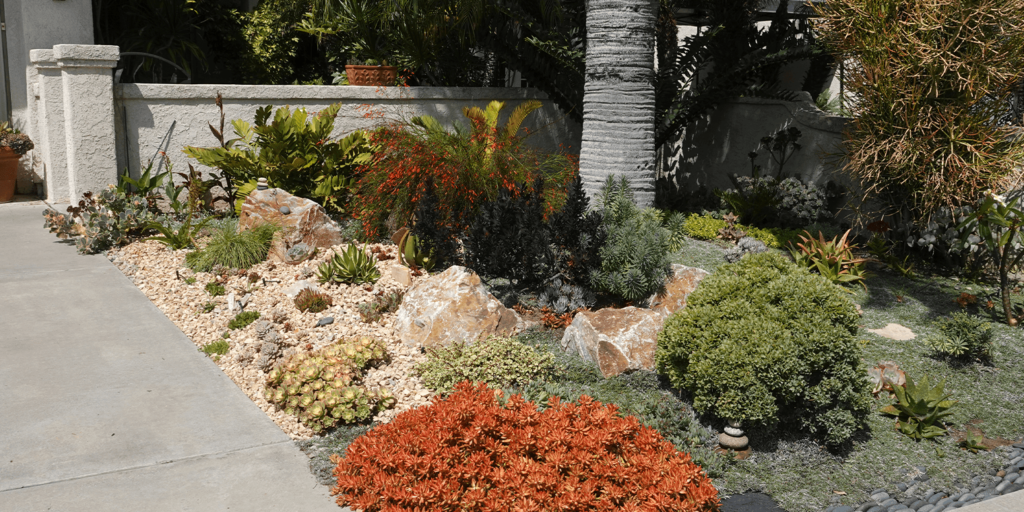
The Basic Guiding Principles of Xeriscaping
As mentioned, xeriscaping can take on different forms, but it is a landscape design practice that follows the same basic principles. These are deliberate design, using drought-resistant plants, having little to no lawn, improving your soil, mulching, and general water conservation practice. Following these principles means you will save water and time on maintaining your garden.
Designing Deliberately
This one is relatively self-explanatory. Like any garden, you need to go into it with some idea of how you will implement the principles listed above. We recommend starting small instead of expecting to transform your entire yard and garden into a xeriscaped landscape all in one go.
Pick one section of your yard or one garden bed that will be your designated xeriscaping space to experiment with using the rest of the guiding principles in this blog! Play with textures, add some color, and keep pollinators in mind as you start your experimental garden bed. Little by little, you can turn your yard into a full-blown, xeriscaped landscape.
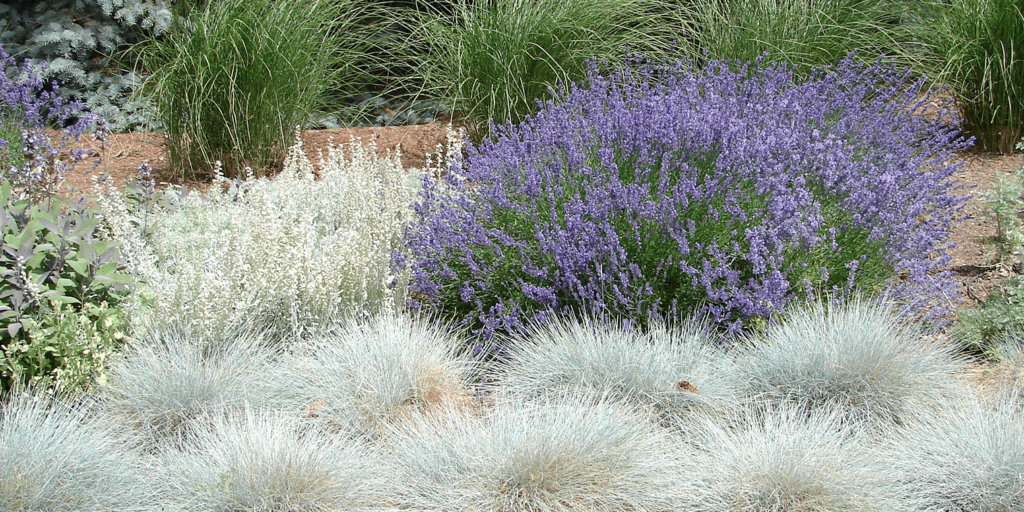
Use Native, Drought Resistant Plants
Native plants are an essential aspect of xeriscaping! You automatically set yourself up for water conservation success by selecting plants designed to survive drought conditions. And, lucky for us in Florida, many native plants are ideal for xeriscaping.
Blanket flowers are a beautiful perennial with high drought tolerance. They will add some color to your xeriscaped garden with their bright red and yellow blooms and attract welcome visitors like butterflies. Swamp sunflower, beach sunflower, bluestem grass, seagrape, and sweet acacia are all native plants that make excellent additions to a xeriscaped yard here in SoFlo.
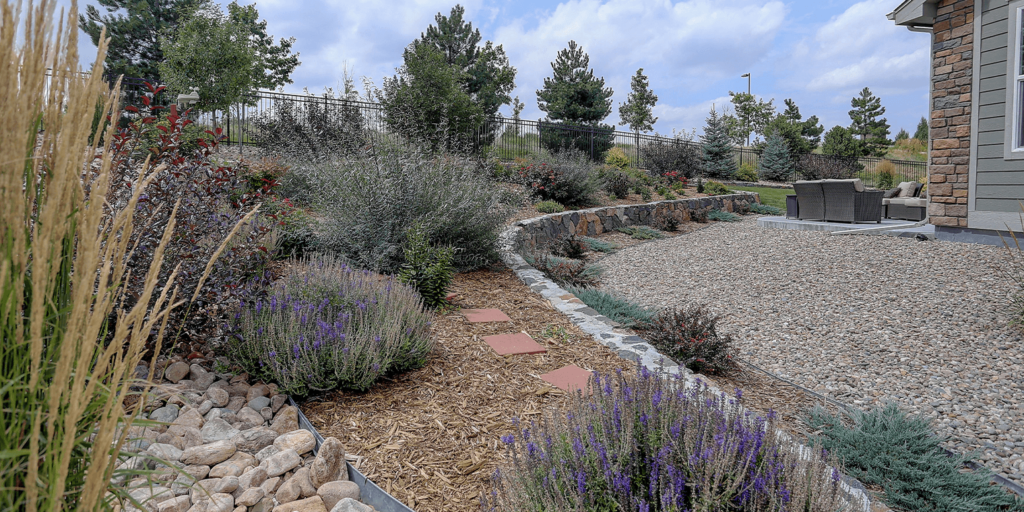
Less Lawn, More Mulch
We understand that many folks love their lawn, particularly if they have little ones running around. With that said, turfgrass, by nature, requires a lot of water to maintain. Some turfgrasses are more drought-tolerant than others, so if you’re attached to having some of that lush grass in your landscape, you can still do it within the means of a xeriscaped yard to a certain extent.
Having a small amount of grass does have a few benefits since it can help reduce runoff and mitigate the heat. Just be mindful of how much you have and where you place it. Having more mulched areas than grassy areas in your yard will, on the other hand, require far less maintenance, irrigation, fertilization, and it reduces evaporation significantly.
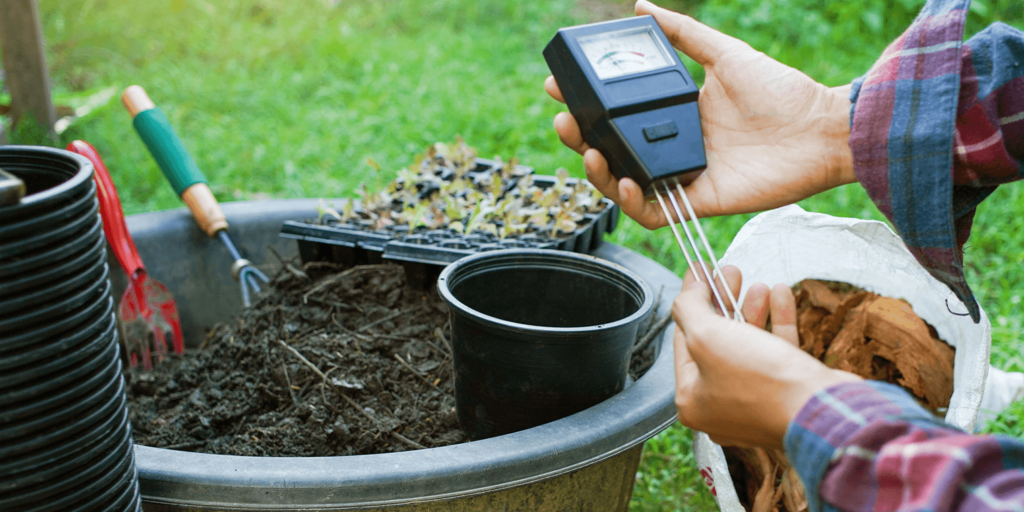
Improve Your Soil
Xeriscaped yards very much depend on healthy, well-balanced soil. If you aim to conserve water (which is the main idea with xeriscaping your landscape), your soil needs to retain moisture and have excellent drainage. You can achieve this by amending your soil with quality compost and doing a soil test to determine the pH of your soil. You may need to incorporate amendments such as limestone if your soil is highly acidic or sphagnum peat if the pH level of your soil is too alkaline.
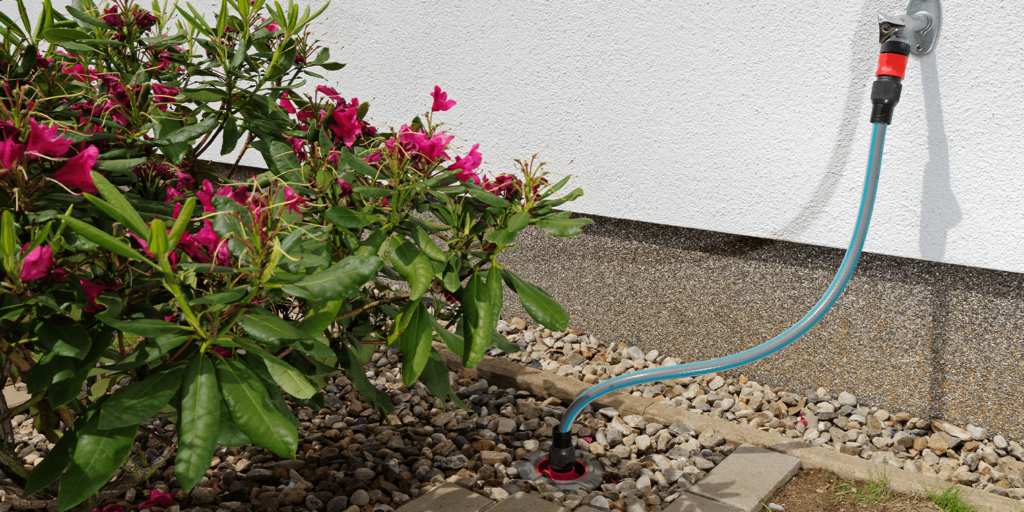
Water Smart
This goes without saying! The whole purpose of xeriscaping your yard is to conserve water. While xeriscaped yards require significantly less water than many others, they still need water! You can achieve this by utilizing an underground irrigation system vs. a traditional hose or sprinkler, watering deeply but infrequently, and watering at the appropriate time of day.
For more ideas on how to xeriscape your South Florida yard or to pick up some drought-tolerant native plants, stop by Living Color Garden Center! We’d be happy to help.

